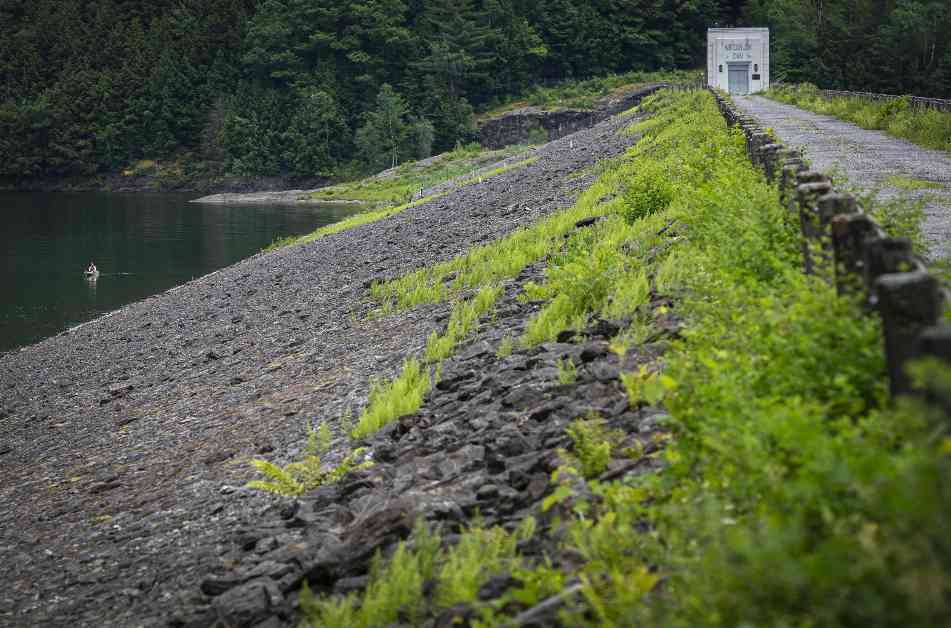Vermont’s Waterbury Dam, a critical structure for flood protection in the Winooski River Valley, is facing a significant need for repair and upgrades. The dam, which serves as the largest in the state, is showing signs of deterioration, impacting its ability to retain water levels and safeguard downstream communities from potential flooding events.
Neil Kamman, the director of the Vermont Department of Environmental Conservation’s Water Investment Division, highlighted the essential role of the Waterbury Dam in protecting the local population centers from Barre to Richmond. He emphasized the critical importance of maintaining public safety for Vermont residents living in proximity to the dam.
The primary issue facing the Waterbury Dam is the deteriorating floodgates that are currently only able to hold three-quarters of the water levels necessary for effective flood protection. Ben Green, the dam safety engineer with the department, identified a combination of factors contributing to the decline in the dam’s performance. These include a chemical reaction causing concrete to swell and crack, as well as the natural aging process of the dam, which is approaching its 100th year of service.
To address these concerns, engineers have proposed a comprehensive plan to repair and enhance the Waterbury Dam’s flood protection capabilities. The project aims to tackle the most damaged sections of the spillway, where concrete repairs are needed to prevent further cracking and deterioration. Additionally, the plan includes the replacement of two original flood gates and the refurbishment of a third gate, as well as the construction of a stronger pedestrian bridge at a higher elevation to support maintenance activities.
An innovative addition to the upgrade plan is the installation of a concrete apron beneath the dam to prevent erosion and stabilize the bedrock. This feature is crucial for maintaining the structural integrity of the dam and ensuring long-term protection against potential water damage.
Despite the promising outcomes of the proposed upgrades, the project still faces challenges related to funding and completion timelines. While Vermont’s congressional delegation has secured authorizations for federal funding through the Water Resources Development Act, additional financial support is required to fully realize the project. The U.S. Army Corps of Engineers has allocated a significant amount towards the initiative, but a funding gap of $40 million remains to be addressed.
Looking ahead, construction on the Waterbury Dam repair project is scheduled to commence in 2027, with an estimated duration of three years for completion. The project team is actively engaging with the local community to gather feedback and input, with a public comment period open until February 25th.
As Neil Kamman aptly summarized, the uncertain landscape of federal appropriations underscores the importance of water infrastructure projects like the Waterbury Dam upgrades. The commitment to enhancing flood protection measures and ensuring the safety of Vermont residents remains a top priority, despite the challenges posed by funding uncertainties at the federal level.
In conclusion, the planned improvements to the Waterbury Dam represent a crucial investment in safeguarding communities against potential flooding disasters and enhancing the resilience of Vermont’s critical infrastructure. By addressing the current maintenance needs and enhancing the dam’s flood protection capabilities, the project is poised to secure a safer and more sustainable future for all those reliant on the vital water management system.









